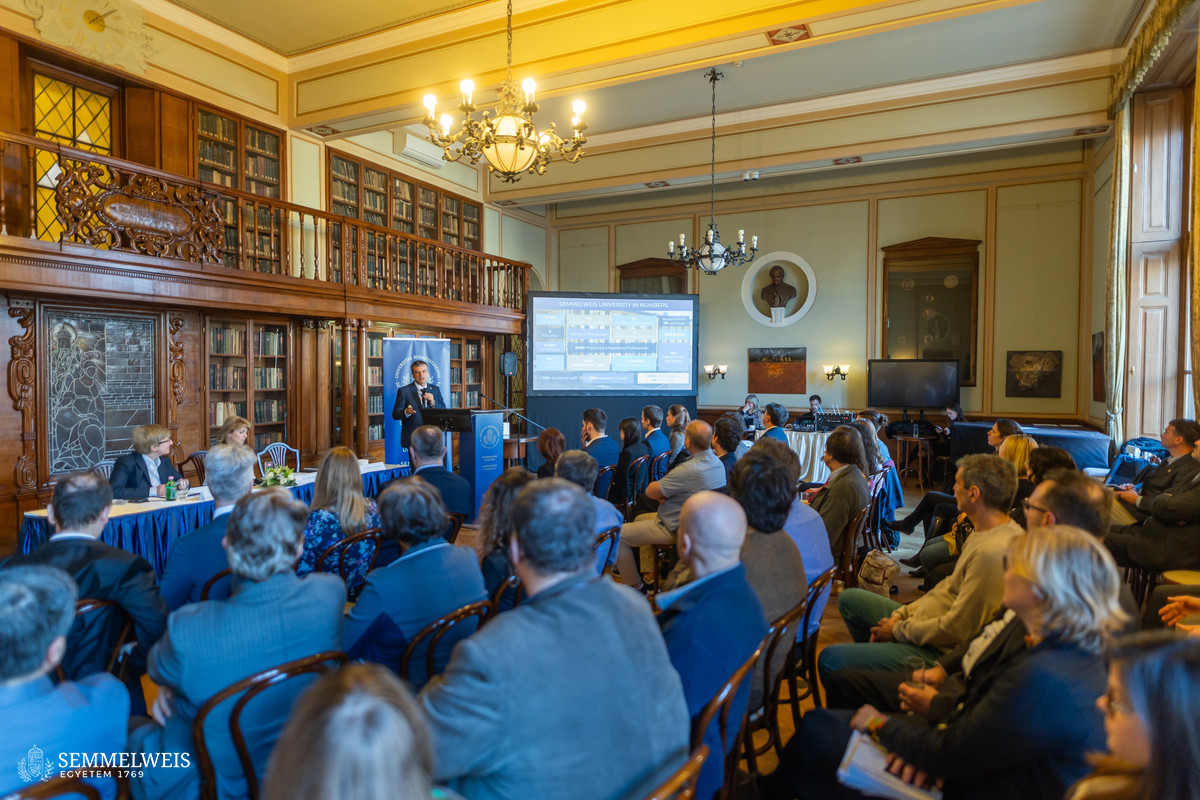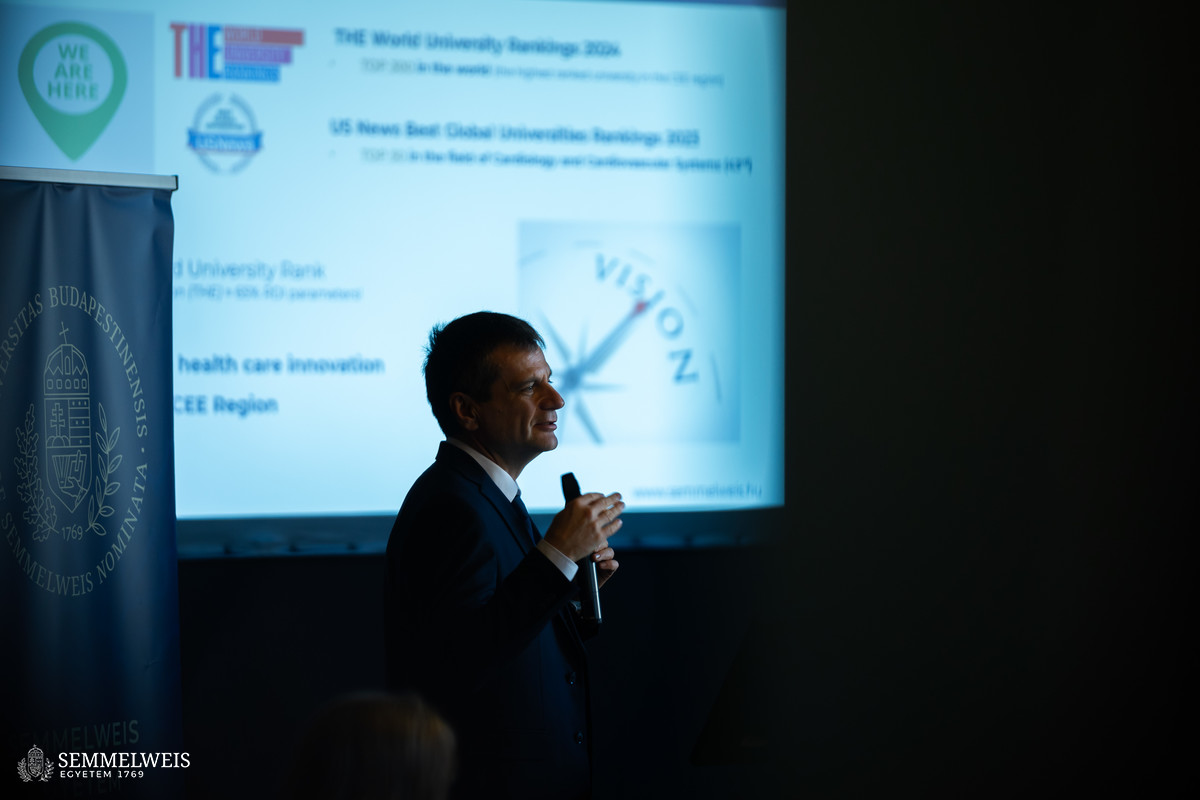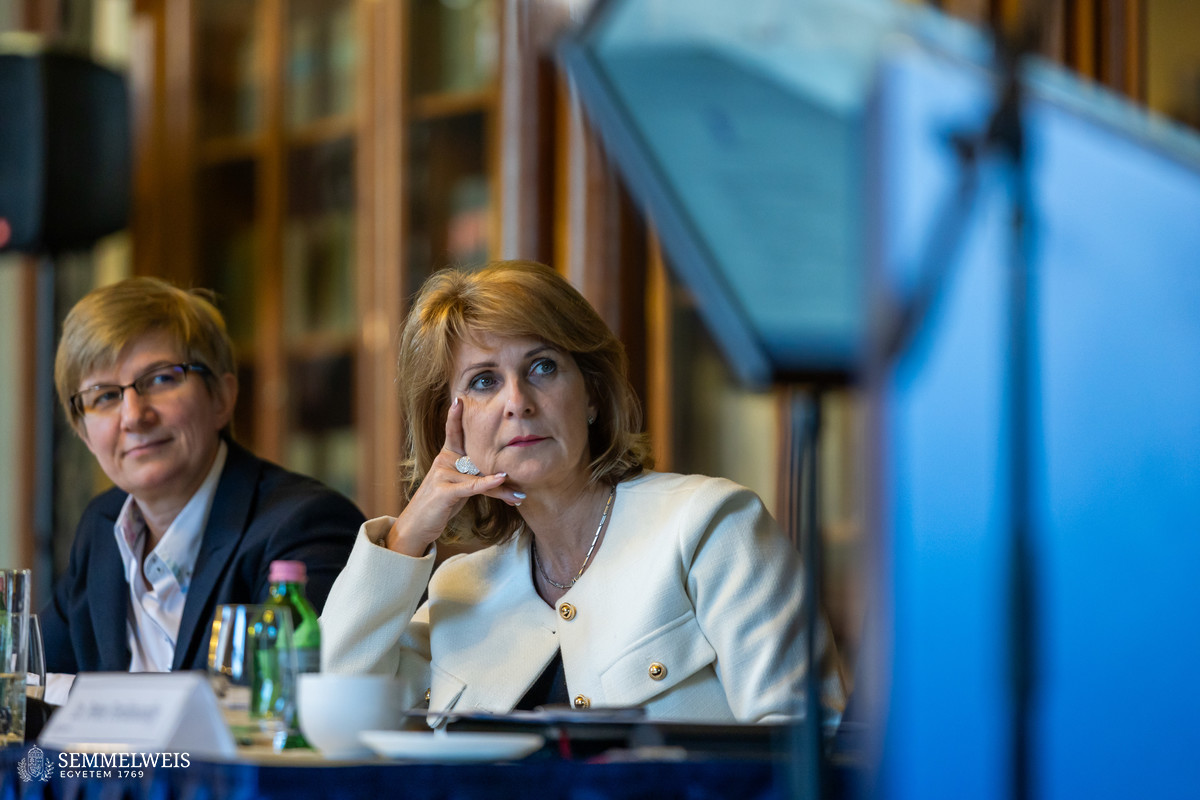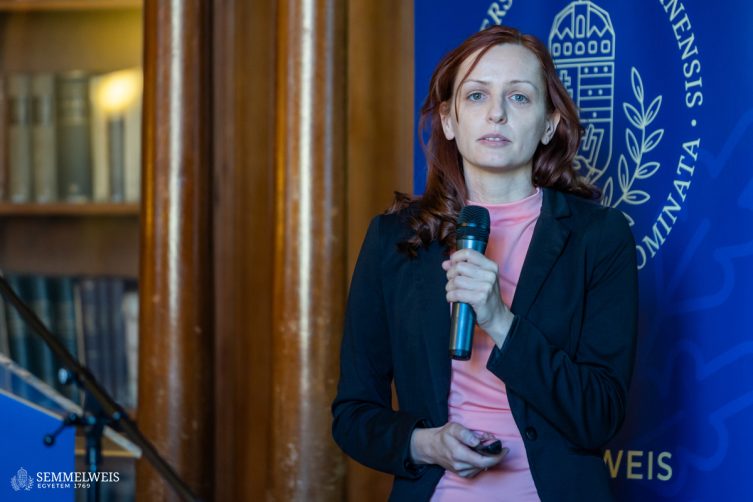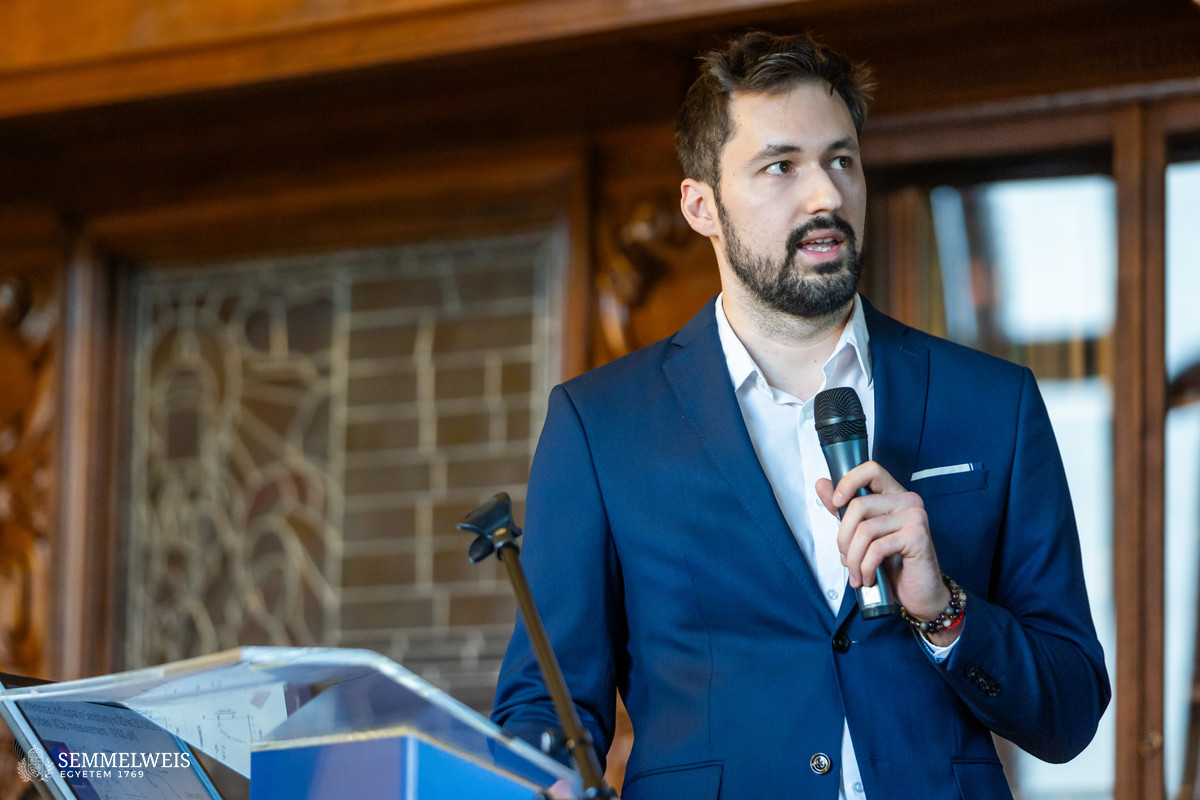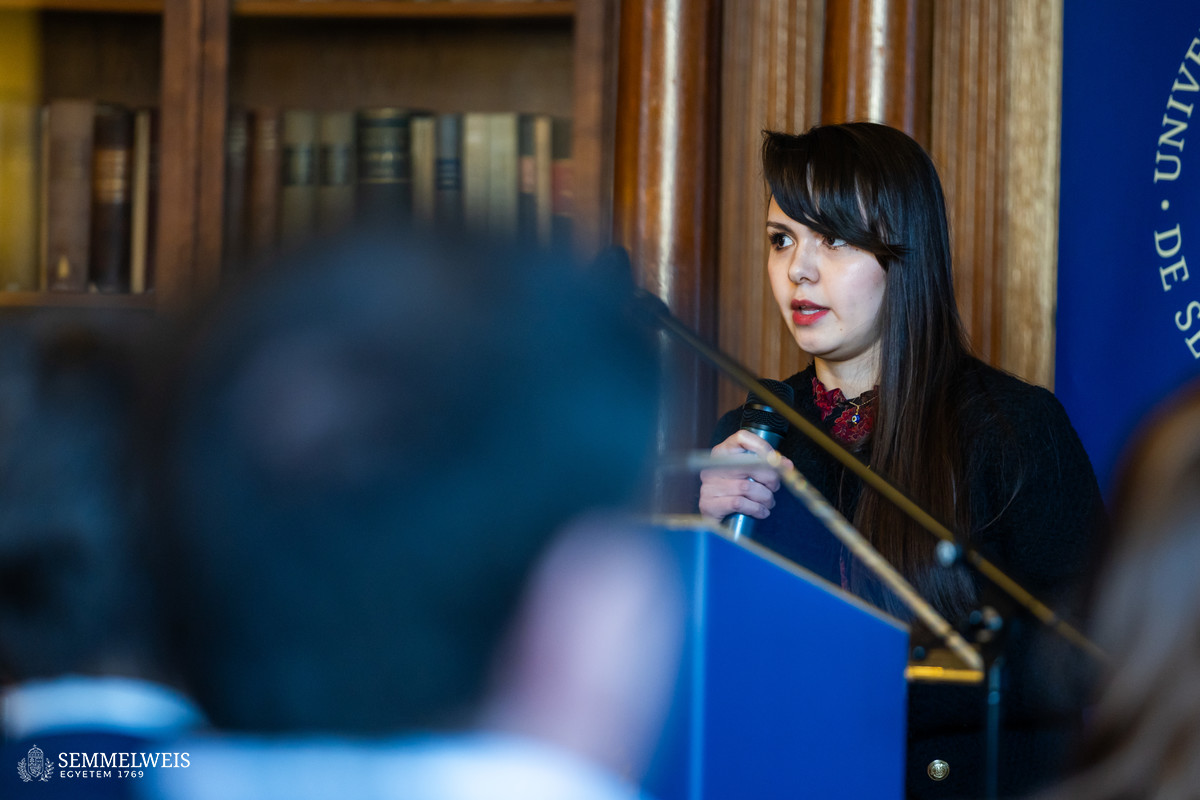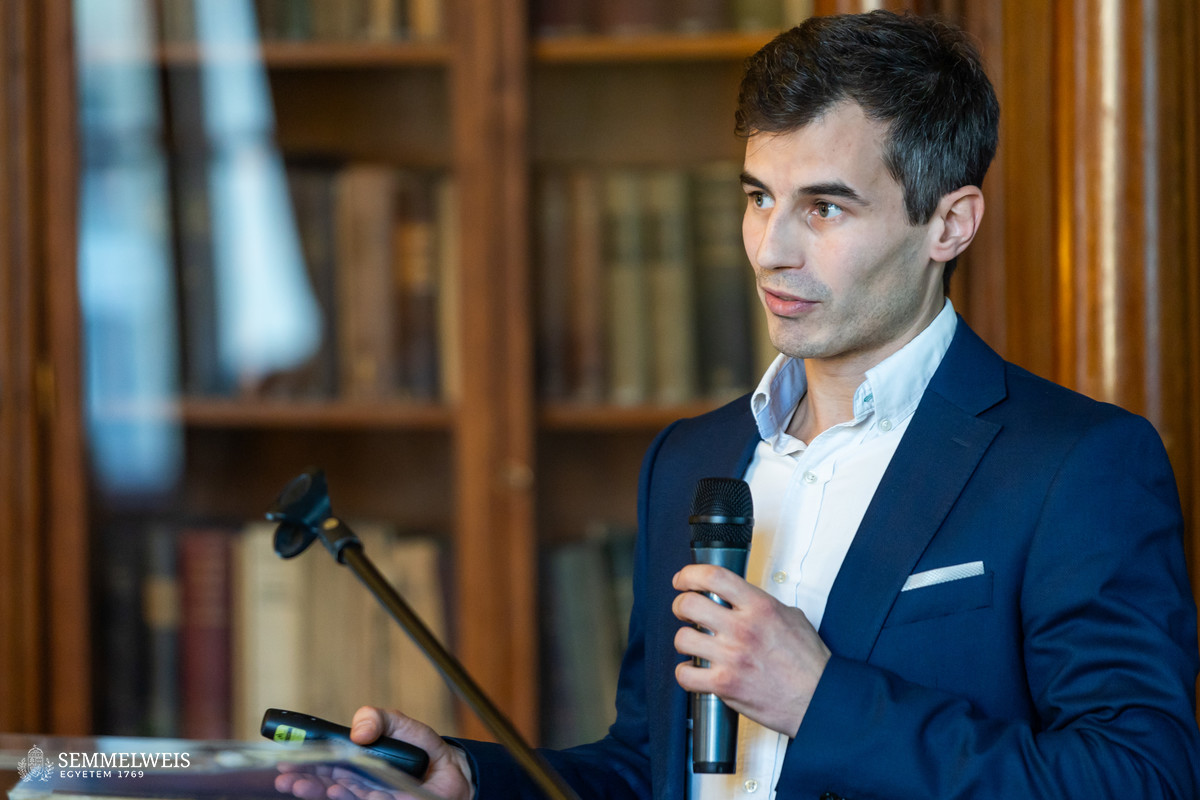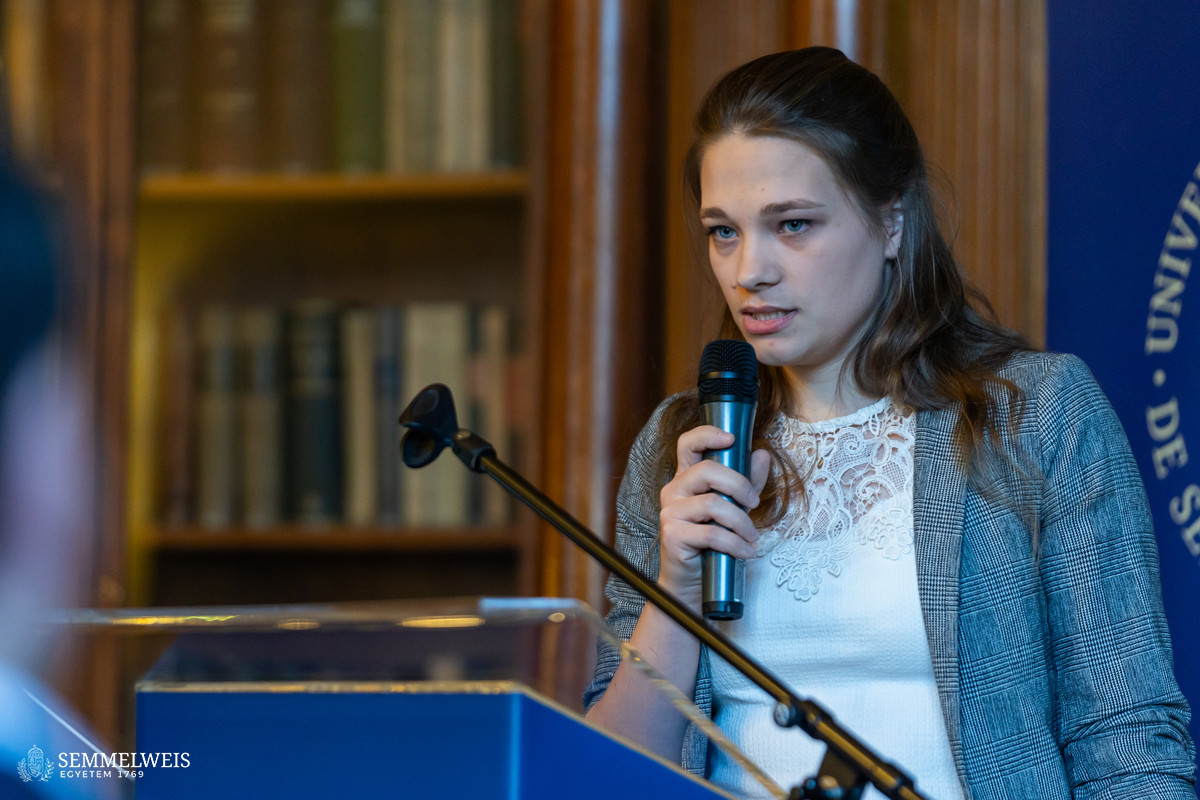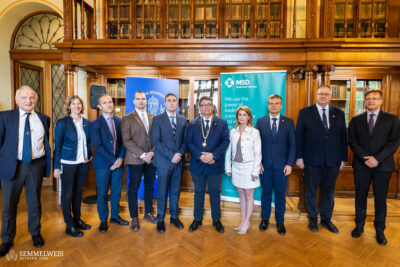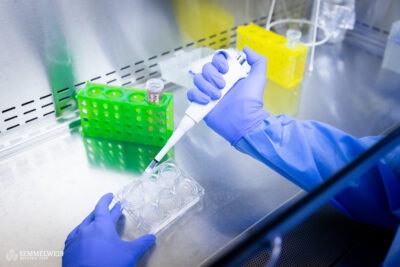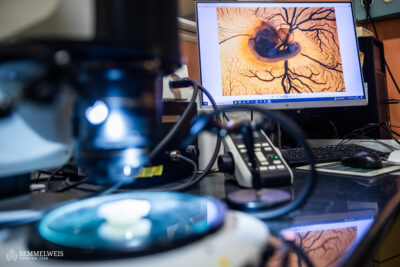The event was opened by Vice-Rector for Science and Innovations Dr. Péter Ferdinandy, who started with highlighting that Semmelweis University currently ranks among the leading universities in the region and is among the top 300 in the world. In addition, the goal laid down in the rector’s program for the period of 2023 to 2028 is to get among the 100 best higher education institutions in the international rankings. This may be achieved by increasing the research, development, and innovation (RDI) activity, and involving as many young researchers and as intensely as possible. To this end, Semmelweis University has nearly doubled the number of its PhD students over the past five years, since, as Dr. Péter Ferdinandy noted, they are the guarantors of innovation and the development of science.
For the university, it is not sufficient to merely increase the number of publications, but it must also actively contribute to innovation. However, the two are intertwined: the entire innovation ecosystem must be built around science.
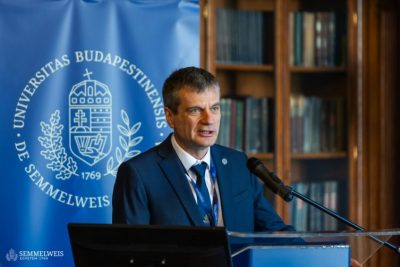 The vice-rector went on to present the RDI support services of Semmelweis University, which are currently being developed. These services include, among others, core facility management, the support of biobank services, and the stimulation of research based on clinical databases, the latter being available from this year. Open access support for publications and their filtering with regards to intellectual property protection, as well as communication related to D1 publications are also available. Design, data collection, and biostatistical support for clinical trials initiated by researchers are also included in the range of services offered. The grant management support has been renewed, therefore project management close to the research site and the coordination of centralized processes will be emphasized in the future. This also includes supporting the utilization of intellectual properties, including obtaining protection and the involvement of industrial partners and investors, as well as helping researchers establish a spin-off company, he explained.
The vice-rector went on to present the RDI support services of Semmelweis University, which are currently being developed. These services include, among others, core facility management, the support of biobank services, and the stimulation of research based on clinical databases, the latter being available from this year. Open access support for publications and their filtering with regards to intellectual property protection, as well as communication related to D1 publications are also available. Design, data collection, and biostatistical support for clinical trials initiated by researchers are also included in the range of services offered. The grant management support has been renewed, therefore project management close to the research site and the coordination of centralized processes will be emphasized in the future. This also includes supporting the utilization of intellectual properties, including obtaining protection and the involvement of industrial partners and investors, as well as helping researchers establish a spin-off company, he explained.
The aim of Semmelweis University is to make the cooperation between industrial companies and the university as extensive and comprehensive as possible, for which purpose the planning phase of the Science Park has started, and the construction of the first building is expected by 2027. This would provide infrastructure and incubation services for spin-off companies, as well as strategy development for innovation activities. “As a flagship project to further speed up innovation and scientific output, we want to get close to the companies, and motivate our scientists to establish their own companies. The major aim of Science Park is to enhance collaboration between Semmelweis University and the industry,” the vice-rector pointed out.
In the framework of the 2023 program of STIA-Proof of Concept, those project applications received support which presented a well-established plan to increase the level of technological development. Besides the realistically set goals, the assessment of the technological and market relevance of the research was also an important aspect.
In the following section of the conference, the researchers presented their project results supported from university resources. Assistant Lecturer at the Department of Psychiatry and Psychotherapy Dr. Edit Vass-Haluska presented the machine learning-based mobile applications developed for patients with schizophrenia, which are intended to ensure remote monitoring of the condition of patients with low adherence. The project may later enable the identification of signals requiring intervention with the help of algorithms based on artificial intelligence.
PhD Researcher Dr. Dániel Sztankovics gave a lecture on 3D bioprinted cancer models based on human samples. This supports the time efficiency of preclinical studies in addition to the reduction in the number of animal experiments in the process of identifying and checking therapeutic targets. The procedure is already available among the university’s core facilities.
PhD Candidate Dr. Sarolta Trinh reported on the development of the Event Tracker electronic surgical diary, which organized vital and event parameters in a structured database. In pediatric anesthesia, this used to be available in printed format only. By uploading the data, a database is created which, by connecting additional clinical data, creates the basis for predicting unexpected events during surgery, as well as assuring the quality of processes and conditions for economic optimization.
Research Fellow Dr. Márk Pulay discussed the clinical feasibility of using a software that enables the monitoring of the upper limb functions of patients with Parkinson’s disease. In addition, PhD Candidate Dr. Marianna Matányi gave a report on the status of intelligent drug dispenser development carried out within the umbrella of the 3D Center of Semmelweis University.
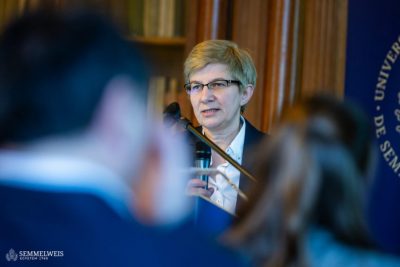 At the end of the event, Dr. Renáta Papp, Director of the Center of Science and Innovation Vice-Rector and Business Development (TÜK), thanked the applicants for their reports, emphasizing the importance of the projects’ progress towards market utilization. The presenters could discuss the necessary roadmap with representatives of TÜK. According to the director, many questions arise in connection with establishing a spin-off company for a young researcher, and to answer them, launching the so-called Semmelweis Innovation Club has been initiated, which also caught the interest of the corporate and investor representatives present at the conference.
At the end of the event, Dr. Renáta Papp, Director of the Center of Science and Innovation Vice-Rector and Business Development (TÜK), thanked the applicants for their reports, emphasizing the importance of the projects’ progress towards market utilization. The presenters could discuss the necessary roadmap with representatives of TÜK. According to the director, many questions arise in connection with establishing a spin-off company for a young researcher, and to answer them, launching the so-called Semmelweis Innovation Club has been initiated, which also caught the interest of the corporate and investor representatives present at the conference.
Mária Sánta
Photo: Bálint Barta – Semmelweis University
